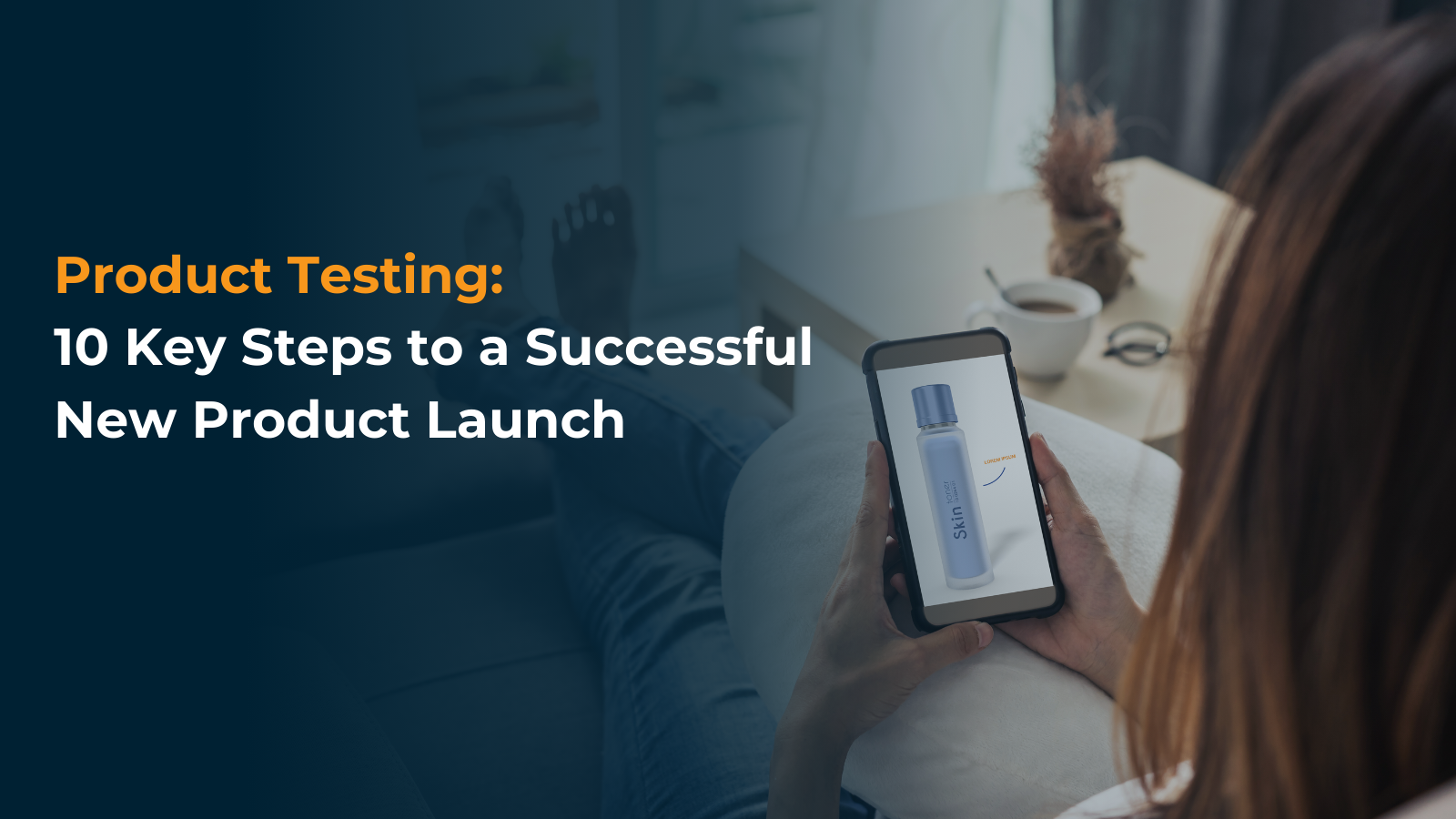How Market Research Technology Improves Consumer Packaged Goods (CPG) Product Innovation

It’s one thing to come up with a brilliant innovation once. Congratulations, you built a better mousetrap—now, how many times can you build an even better or different one?
That’s the challenge for the innovation teams at consumer-packaged goods (CPG) companies. Basic human needs are fairly static, so companies have to constantly look for new ways to differentiate their offerings and satisfy shifting consumer attitudes and preferences. And of course, CPG companies don’t have free rein to make new and interesting products; their innovations also have to be commercially viable.
Market research should be the key to profitable new product innovation in the CPG industry, but it often brings its own set of challenges. That’s where market research technology comes in.
First, though, let’s take a step back to consider the overall CPG product development process.
How to Obtain CPG Insights for Innovation
The essential elements of innovation couldn’t be simpler: identify an unmet need and design a product that will meet that need. It’s in the details that things get quite a bit more complicated.
The CPG innovation process involves several key stages to develop successful new products:
- Market Research: Gather CPG consumer insights to understand market needs and trends.
- Idea Generation: Brainstorm and identify potential product ideas based on market research.
- Concept Development: Create detailed product concepts and conduct feasibility studies.
- Prototyping and Testing: Develop prototypes and obtain in-depth feedback from
- Product Development: Refine the product based on feedback and finalize production plans.
- Launch and Marketing: Introduce the product to the market with targeted marketing strategies.
- Post-Launch Evaluation: Monitor product performance and gather consumer feedback for continuous improvement.
Innovation starts with accurately identifying gaps in the market. This could involve monitoring sales numbers, conducting in-home usage tests (IHUTs), or passively monitoring product consumption.
It’s not enough to just recognize that there is a gap; you also need to know why it exists. Maybe people aren’t buying as many paper towels as they used to. Have shoppers changed their behavior due to inflation? Or are they concerned about the environmental impacts of disposable paper products? The answer determines the direction of your innovation efforts.
Once you understand the gap, you have to figure out what you’re going to do about it. The CPG product development process is iterative, as teams brainstorm potential solutions, rank or prioritize those ideas, develop new prototype products, and test and refine those innovations until they land on a commercially viable product.
Innovation teams also need to involve other departments along the way. Will your manufacturing facilities be able to adapt to this new design? Can you source the materials you need at a price point that works? How will you market your new product innovation in a way that resonates with shoppers?
In short, the quality of your innovation efforts depends on how well you understand your consumers’ real lives. That’s what’s behind the movement toward consumer empathy programs.
The Role of Market Research in Driving CPG Product Development
CPG market research plays a crucial role in driving innovation by providing deep CPG consumer insights into needs, preferences, and behaviors. In the fast-paced CPG industry, competition is fierce. To stay ahead, it’s crucial that CPG brands rely on understanding consumers and bringing innovation to consumer products. That’s why market research plays a vital role in CPG product development. Through insights gathered via market research, researchers can comprehend consumer trends and preferences and innovate products that resonate with ever-evolving consumer needs and preferences.
Market research should provide the data you need to understand consumer behavior—but traditional approaches don’t always move at the speed of innovation.
How Traditional Market Research Impedes CPG Product Innovation
Standard office-based market research tends to be slow, time-consuming, and inflexible. Researchers will often ask consumers to recall the details of their habitual or subconscious activities—running a load of laundry, making lunch, or washing their hair—while they’re sitting in an unfamiliar research office, with none of their usual context cues. Plus, because these studies generally demand participants who can travel to a study office, companies may only hear from a fraction of their potential consumers.
As a result, CPG companies and their research teams may be largely in the dark about what products consumers use, when they use them, or how much they use at a time.
Nor do they have any idea what’s motivating that use. What fleeting thoughts pass through consumers’ minds as they use CPG products? What do they wish they had instead of their current products?
Fortunately, there’s a solution.
Using Technology to Overcome the Obstacles to CPG Innovation
Modern technology—from mobile phones with video cameras to smart sensors and connected devices that wirelessly upload data—has the power to transform the CPG innovation process.
For starters, technology enables research teams to gather data in a fraction of the time. Researchers no longer have to wait months to collect and analyze quantitative data about product use or parse survey responses about consumer preferences. Mobile market research technology lets companies hear from consumers in real-time, as they live their daily lives.
Because mobile technology is already in most consumers’ pockets, it’s not just faster than traditional in-office studies or even online surveys: it’s also much more flexible. Your research and innovation teams can virtually accompany consumers as they shop for products, seeing what they see and hearing what they think in real-time.
That instant accessibility also frees you from the limits of what your study participants remember about their usual practices. Modern market research tools enable both passive collection of quantitative product usage data—so you can automatically see what people use and when—and in-the-moment follow-up questions to capture qualitative data about consumer motivations and impressions.
In addition, mobile technology lowers the barriers to research participation, giving companies access to the fresh perspectives of previously underrepresented demographics and markets.
Level up Your CPG Product Innovation With Technology-Driven Market Research
High-quality market research powered by modern technology can help you identify gaps in the market faster and understand why those gaps exist and what consumers wish they had to fill them.
QualSights can help. Our connected, always-on product consumption intelligence coasters work 24/7 to automatically provide accurate and precise quantitative data about product usage. Meanwhile, our mobile qualitative insights platform lets consumers explain why they do what they do with real-time video feedback and follow-up questions designed by research experts.
Ready to take your CPG product innovation to the next level? Contact us to learn more and set up a demonstration.
 Research Industry Insights
Research Industry Insights 

